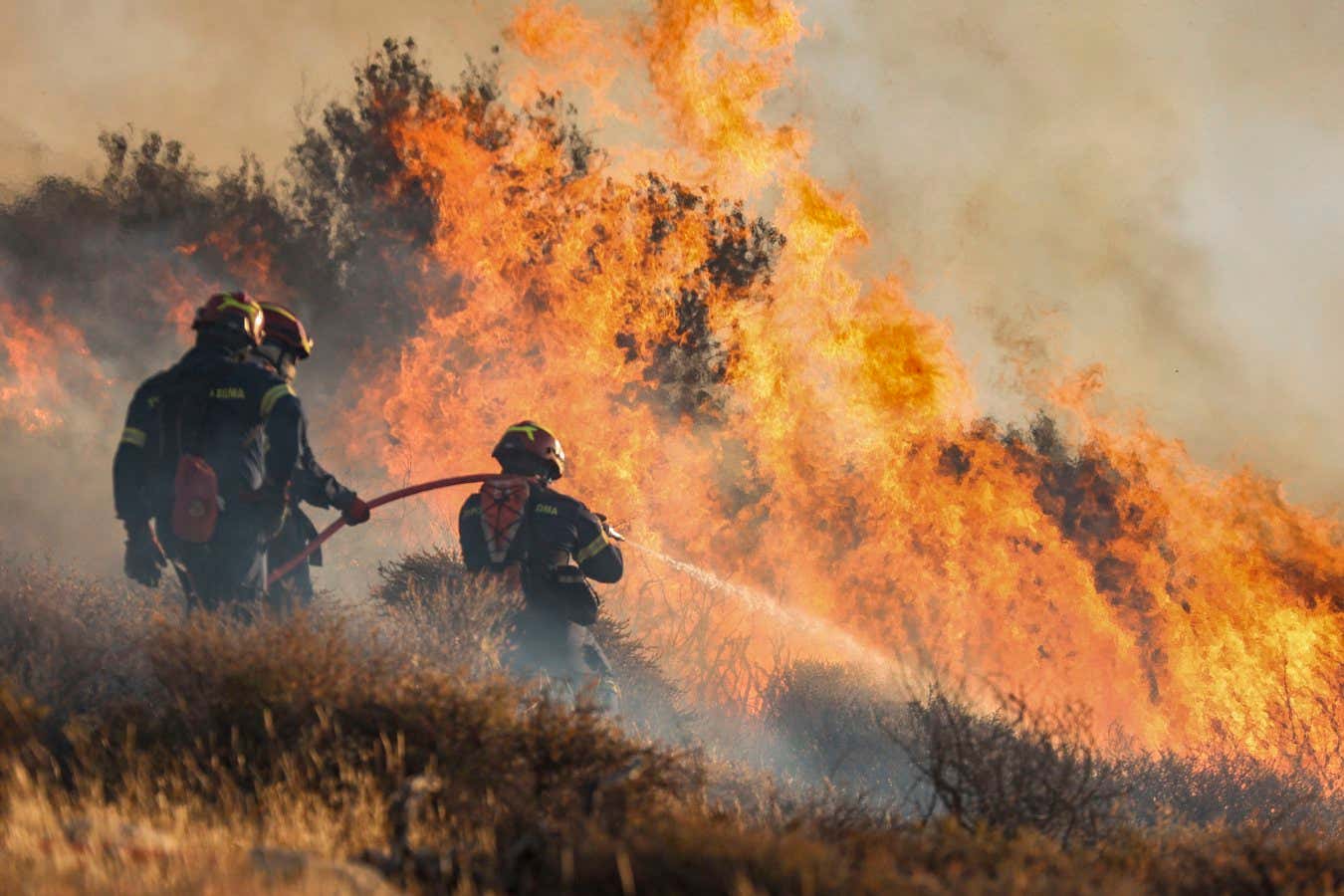With the world on the cusp of passing 1.5°C of warming, scientists are turning their attention to defining a new limit for temperature rises – but not everyone agrees that we should
By Madeleine Cuff
18 July 2025
Wildfires are expected to become more frequent and severe as global temperatures rise
COSTAS METAXAKIS/AFP via Getty Images
If you told a child to stay “well away” from a cliff edge, how close to the edge could they creep before you started shouting for them to turn back? That is the question puzzling climate scientists right now, as it looks almost certain that we will breach the global commitment to limiting warming to no more than 1.5°C above pre-industrial levels. As we enter the danger zone, what comes next?
“Governments have set themselves 1.5°C targets. But what those mean in a world where we’re already past 1.5°C is harder and harder to understand,” says Robin Lamboll at Imperial College London. “I think it would be very helpful if people started talking much more concisely and concretely about the actual goals they have in mind.”
Read more
The jet stream may be starting to shift in response to climate change
Those national targets are derived from the international Paris Agreement, which was signed in 2015 and is a vague starting point for defining climate limits. The text formally commits countries to “pursuing efforts” to limit warming to 1.5°C and to holding any temperature increase to “well below” 2°C. But how low is “well below”?
“The wording of the long-term temperature goal of the Paris Agreement is both a solution and a challenge,” says Joeri Rogelj, also at Imperial College London. “The solution is that this was the wording that countries could agree to. The challenge is that it leaves room for interpretation.”
Rogelj fears that unless the meaning of “well below” 2°C is clarified – and swiftly – there is a risk that the world simply takes 2°C as the new line in the sand. The trouble is, many scenarios for achieving 2°C only provide a 50 per cent chance of success, meaning that aiming for this line could still see us vastly overshooting it.
